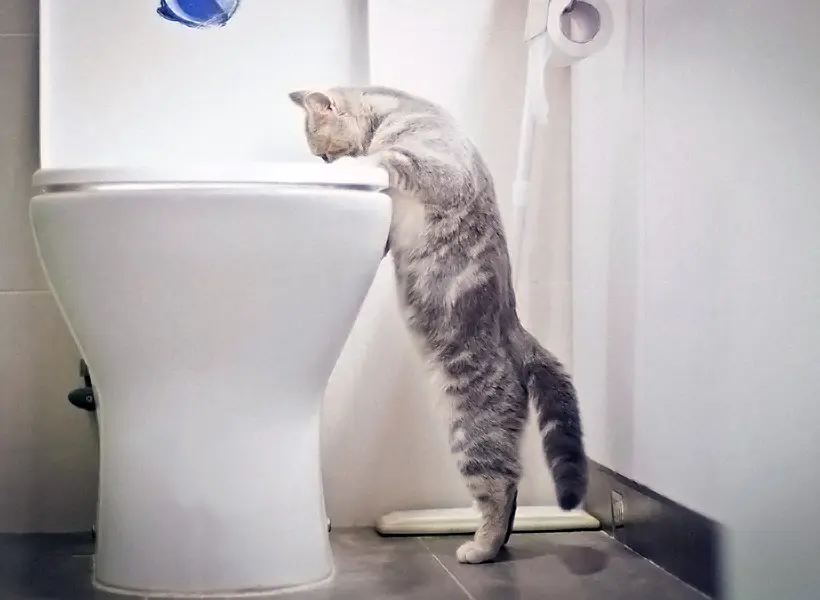The article down below in relation to Don’t flush cat feces down the toilet is fairly informative. You should keep reading.

Intro
As cat proprietors, it's vital to be mindful of just how we dispose of our feline pals' waste. While it might appear hassle-free to purge pet cat poop down the toilet, this technique can have damaging repercussions for both the setting and human health.
Ecological Impact
Purging cat poop introduces dangerous microorganisms and bloodsuckers right into the water, presenting a substantial risk to water ecosystems. These pollutants can adversely affect aquatic life and compromise water quality.
Wellness Risks
Along with environmental problems, flushing pet cat waste can likewise position health dangers to humans. Cat feces might include Toxoplasma gondii, a parasite that can cause toxoplasmosis-- a potentially serious disease, particularly for pregnant females and people with damaged immune systems.
Alternatives to Flushing
Fortunately, there are much safer and more responsible ways to throw away feline poop. Consider the following options:
1. Scoop and Dispose in Trash
One of the most typical technique of dealing with feline poop is to scoop it right into a naturally degradable bag and toss it in the garbage. Make sure to use a committed trash inside story and throw away the waste immediately.
2. Use Biodegradable Litter
Select biodegradable cat litter made from materials such as corn or wheat. These clutters are eco-friendly and can be safely dealt with in the garbage.
3. Bury in the Yard
If you have a yard, consider hiding cat waste in a designated location away from vegetable yards and water sources. Make certain to dig deep enough to avoid contamination of groundwater.
4. Mount a Pet Waste Disposal System
Buy a family pet garbage disposal system especially developed for feline waste. These systems make use of enzymes to break down the waste, lowering smell and ecological impact.
Final thought
Liable animal possession extends past supplying food and sanctuary-- it also includes appropriate waste administration. By refraining from purging feline poop down the commode and opting for alternate disposal techniques, we can minimize our ecological impact and secure human health.
Why Can’t I Flush Cat Poop?
It Spreads a Parasite
Cats are frequently infected with a parasite called toxoplasma gondii. The parasite causes an infection called toxoplasmosis. It is usually harmless to cats. The parasite only uses cat poop as a host for its eggs. Otherwise, the cat’s immune system usually keeps the infection at low enough levels to maintain its own health. But it does not stop the develop of eggs. These eggs are tiny and surprisingly tough. They may survive for a year before they begin to grow. But that’s the problem.
Our wastewater system is not designed to deal with toxoplasmosis eggs. Instead, most eggs will flush from your toilet into sewers and wastewater management plants. After the sewage is treated for many other harmful things in it, it is typically released into local rivers, lakes, or oceans. Here, the toxoplasmosis eggs can find new hosts, including starfish, crabs, otters, and many other wildlife. For many, this is a significant risk to their health. Toxoplasmosis can also end up infecting water sources that are important for agriculture, which means our deer, pigs, and sheep can get infected too.
Is There Risk to Humans?
There can be a risk to human life from flushing cat poop down the toilet. If you do so, the parasites from your cat’s poop can end up in shellfish, game animals, or livestock. If this meat is then served raw or undercooked, the people who eat it can get sick.
In fact, according to the CDC, 40 million people in the United States are infected with toxoplasma gondii. They get it from exposure to infected seafood, or from some kind of cat poop contamination, like drinking from a stream that is contaminated or touching anything that has come into contact with cat poop. That includes just cleaning a cat litter box.
Most people who get infected with these parasites will not develop any symptoms. However, for pregnant women or for those with compromised immune systems, the parasite can cause severe health problems.
How to Handle Cat Poop
The best way to handle cat poop is actually to clean the box more often. The eggs that the parasite sheds will not become active until one to five days after the cat poops. That means that if you clean daily, you’re much less likely to come into direct contact with infectious eggs.
That said, always dispose of cat poop in the garbage and not down the toilet. Wash your hands before and after you clean the litter box, and bring the bag of poop right outside to your garbage bins.
https://trenchlesssolutionsusa.com/why-cant-i-flush-cat-poop/

I'm very interested in How to Dispose of Cat Poop and Litter Without Plastic Bags and I really hope you enjoyed the new blog entry. If you enjoyed reading our blog posting plz be sure to pass it around. Thanks for your time. Visit us again soon.
Call Today